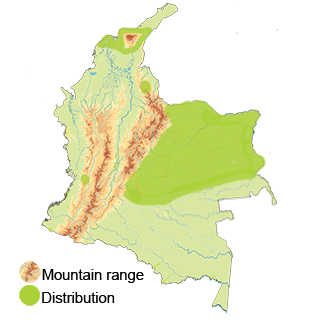Rufous Nightjar
The Rufous Nightjar (Antrostomus rufus) Read in Spanish
Appearance: The Rufous Nightjar is a medium-sized bird with cryptic plumage, typically displaying a mottled pattern of gray, brown, and rufous colors that helps it blend in with its surroundings. It has a rounded head, a wide mouth for catching insects in flight, long wings, and a short, slightly forked tail. Its large eyes provide excellent night vision, suited to its nocturnal habits.
Habitat: The Rufous Nightjar is typically found in open habitats such as savannas, grasslands, scrublands, and forest edges. It may also occur in disturbed areas, agricultural lands, and secondary growth habitats where it can find suitable roosting and nesting sites.
Behavior: Being primarily nocturnal, the Rufous Nightjar is most active during dusk and dawn, when it hunts for flying insects like moths, beetles, and other nocturnal prey. During the day, it rests on the ground or perches on low branches or rocks, relying on its cryptic plumage for camouflage.
Breeding: Breeding behavior of the Rufous Nightjar typically involves courtship displays by males, which may include aerial acrobatics, vocalizations, and territorial defenses. Females lay their eggs directly on the ground, often in a scraped depression or on leaf litter, where they are incubated by both male and female partners.
Conservation Status: The conservation status of the Rufous Nightjar in Colombia is not specifically assessed by the IUCN Red List.
Distribution
The Rufous Nightjar (Antrostomus rufus)
Caribbean Region: The Rufous Nightjar can be found in parts of the Caribbean region of Colombia, including areas along the northern coast and the Sierra Nevada de Santa Marta mountain range.
North Andes Region: This bird species is also known to inhabit certain areas in the North Andes region of Colombia, which includes the departments of Antioquia, Caldas, Risaralda, and Quindío.
Eastern Andes Region:** In the Eastern Andes region, the Rufous Nightjar can be found in parts of Boyacá, Santander, and Norte de Santander departments.
Taxonomy
The Rufous Nightjar (Antrostomus rufus)
- Kingdom: Animalia
- Phylum: Chordata
- Class: Aves (Birds)
- Order: Caprimulgiformes
- Family: Caprimulgidae
- Genus: Antrostomus
- Species: Antrostomus rufus
Vocalization
The Rufous Nightjar (Antrostomus Rufus)
- Song: The Rufous Nightjar's song is a distinctive and haunting sound that is typically described as a series of plaintive whistles or nasal calls. Its song is often characterized by a repetitive and rhythmic pattern that can carry over long distances, especially in the stillness of the night.
- Churring Call: In addition to its song, the Rufous Nightjar is known for its churring call, a mechanical, insect-like sound produced by males during courtship displays or territorial interactions. The churring call is created by the bird rapidly vibrating its outer tail feathers in flight, producing a "whirring" or buzzing noise that is a key component of its communication.
- Contact Calls: Rufous Nightjars also use contact calls to communicate with their mates and defend their territories. These calls are typically shorter, softer, and serve to maintain contact between individuals in their habitat.
- Alarm Calls: When disturbed or threatened, Rufous Nightjars may emit alarm calls, which are sharp and loud vocalizations used to signal danger and potentially deter predators or other threats.
- Dusk and Dawn Choruses: During dusk and dawn, Rufous Nightjars may participate in choruses with other individuals of their species, creating a symphony of calls that mark the transition between day and night.





